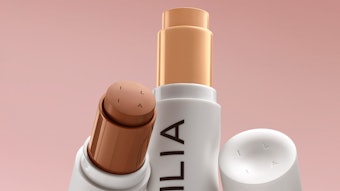- Weaker consumer confidence boosted at-home DIY pampering to the benefit of nail care brands.
- In 2011, though some discretionary spending remained weak, there were signs of a more devil-may-care attitude to consumption, with the notable growth of luxury brands with affordable price tags.
- In 2012, growing demand for affordable “treat yourself” beauty care in developed markets will trigger investment in mass-market color cosmetics that offer premium and multifunctional features.
- Brands will find the sweet spot of opportunity in color cosmetics in the emerging markets, particularly second-tier emerging markets—both the most attractive growth markets and the riskiest in terms of new investment.
As the global economy tilts toward a potentially protracted downturn, what lies in store for the color cosmetics category? Will growth in the developed markets be clipped by weaker discretionary spending capacity, or will consumers dilute the doom and gloom with affordable feel-good purchasing?
And with the BRICs looking more exposed to contagion than during the financial crisis of 2008/2009, are leading players becoming overdependent on Brazil and China to bulk out their global growth? If so, where should manufacturers be looking to strengthen their positions in 2012 and beyond?
Nail Polish Bucks Trend of Discretionary Pinch
The consensus in fast-moving consumer goods is that nonessential products will normally experience a slowdown in demand when discretionary spending power becomes squeezed. On paper, that appears to bear out in beauty and personal care.
For example, in 2009, the first full year following the collapse of Lehman Brothers, the two biggest retail markets in the world for color cosmetics, the U.S. and Japan, both slipped into negative growth (-1% and -4%, respectively, at fixed U.S. dollar prices), according to data from Euromonitor International.
It is, however, an oversimplification to say that color cosmetics are intrinsically more vulnerable to weak discretionary spending power than necessity-driven categories. The implication is that deodorants, for example, ought to have been more insulated in the U.S. and Japan, yet retail sales registered flat performances in both markets.
Baby care, another ostensibly necessity-driven category, also struggled in 2009, with flat growth in the U.S. and a contraction in Japan. Both deodorants and baby care fared better than color cosmetics, but not by much.
Equally, in the midst of the 2008/2009 crisis, there was little to support the so-called “lipstick effect”—a term coined in reference to consumers treating themselves to affordable luxuries, specifically lipstick, during periods of belt-tightening. In both the U.S. and Japan, lipstick was the worst affected category of color cosmetics in 2009, with retail sales dropping by 7% and 4%, respectively.
If there was a lipstick effect during the recent period of global economic crisis, it was visible not in lipstick but in nail polish, which bucked the downward retail trend in the U.S. with cumulative growth of a whopping 46% over the 2007–2010 period, according to Euromonitor International.
Growth of At-home DIY Pampering
Lipstick might not be the best benchmark to measure “treat yourself” consumption, but it would be unwise to discount the concept of affordable indulgence as we enter a new period of austerity. It is noteworthy, for example, that color cosmetics not only returned to growth in the U.S. in 2010 but outperformed deodorants, a staple, with 4% growth versus 2.5%.
True, the U.S. economy recovered in 2010, and as such, there was a boost to discretionary spending. But, consumer confidence, which is a key driver of purchasing habits, remained low. The implication is that something else was at play in driving demand for color cosmetics.
It was a similar story in Western Europe. Retail sales of color cosmetics in the U.K. and Germany, for example, rose by 5% and 6%, respectively, in 2010, despite widespread concerns about job security, rising inflation and consumer debt. And concurrent with trends in the U.S., nail polish was a standout performer, posting retail growth of 7% in Germany and 4% in the U.K.
Product innovation—as examples, to speed up drying and to ease application—was a value-added spur to nail polish, but there was evidence, too, that weaker consumer confidence acted as a boost to at-home DIY pampering, mostly at the expense of more costly, away-from-home salon treatments.
Birth of a New Devil-May-Care Consumption Culture
In 2011, discretionary spending remained weak across the developed markets, with the macroeconomic climate worsening in the EuroZone. There were, however, signs of a more devil-may-care attitude to consumption, for example in the upward growth curve of luxury brands, especially those with affordable price tags.
Generation Y, consumers born between 1977–1994, was a major driver of affordable luxury, fueling upbeat demand for a wide spectrum of “treat yourself” discretionary products from mascara to Mulberry handbags. The propensity of Generation Y to spend rather than save is not as odd as it might seem. It is a measure of how young consumers have started to lose confidence in the financial sanctity of the future and, as a result, prefer to spend today what they might not have tomorrow. It is not a philosophical shift but a desire to make the best out of a bad situation.
Multifunctionality Will Be Core of Product Innovation
In 2012, growing demand for affordable treat yourself beauty care in developed markets will trigger stronger investment in mass-market color cosmetics that offer premium and multifunctional features.
Premium functionality will be particularly evident in facial makeup, with growing numbers of brands offering value-added benefits such as sun protection and anti-aging formulas. In turn, this will raise the competitive bar for skin care.
L’Oréal’s Lancôme Teint Miracle, for example, contains, in addition to SPF15, light reflecting technology to improve skin tone and texture. And Avon’s Healthy Makeup contains vitamins and antioxidants as well as features to improve skin luminosity.
These types of multifunctional products will become increasingly visible, but they will be positioned at mass-market price points as economic constraints tighten. This will blur the boundary between mass market and premium brands. Color cosmetics also have potential to magnify concepts of fun and sociability at a time of weak discretionary spending power, for example through the use of bold and brightly colored packaging. Vibrant colors also draw the attention of consumers and act as competitive points of differentiation.
Second-tier Emerging Markets Risky; Laden With Opportunity
Globally, the sweet spot of opportunity in color cosmetics will shine brightest on the emerging markets. It will not be all about the BRICs, however.
Brazil, in particular, has been a powerful growth engine over the past five years, fueled by its burgeoning middle class and the development of new consumption bases in the fast-growing regional economies of the northeast. However, Brazil is going through a tougher economic period, with GDP stagnating in the third quarter of 2011.
Brazil’s beauty-conscious middle class will continue to drive global incremental value in color cosmetics in 2012, but the slowing of the economy is a signal that companies should not become overdependent on the BRICs for their revenue growth. China’s economy is also slowing, albeit only marginally.
Going forward, the color cosmetics category ought to be looking at building stronger positions in a raft of fast-growing second-tier emerging markets. The problem is that some of the most attractive growth markets are also some of the riskiest in terms of new investment.
Over the 2011–2015 period, Iran, for example, is forecast by Euromonitor International to be the fifth biggest growth market in the world for color cosmetics, based on incremental value.
The operating environment in Iran is enormously difficult, but brand owners would be wise to look at the long-term picture. Currently, there is widespread penetration of adulterated or smuggled color cosmetics, which enter the country primarily from Turkey. The long-term opportunity is to drive a dynamic formal retail market.
Iran’s Islamic Revolution took place over three decades ago and was a springboard to a baby boom, urged by the then ruler Ayatollah Khomeini as a means to enlarge the army. In a twist of fate, Iran’s baby boomers (50% of the population is under 25) are today swelling underground opposition groups.
It is not uncommon for teenage girls and young women to flout the Islamic code in Iran by wearing makeup, dyeing their hair and discarding their compulsory head scarf (hijab). Crucially, this is the generation that will be running the country over the long term.
Other riskier emerging markets with attractive growth potential include Venezuela, Colombia, Thailand, Ukraine, Pakistan and Vietnam, according to data from Euromonitor International. By developing stronger positions in such markets, and spreading the risk, the yield on investment could be substantial to 2015 and beyond.
The BRICs will, of course, continue to generate valuable new business, not least China as its wealth spreads inland from the coastal cities. But, wider global reach will become ever more important to strategic planning. What is clear is that 2012 is shaping up to be a year of numerous strategic challenges for color cosmetics, yet with creative and innovative product developments, together with savvy and bold investment in emerging markets (particularly those lying off the beaten path), there are plenty of opportunities, too.
Rob Walker, senior fast-moving consumer goods analyst, Euromonitor International, can be contacted at [email protected].










